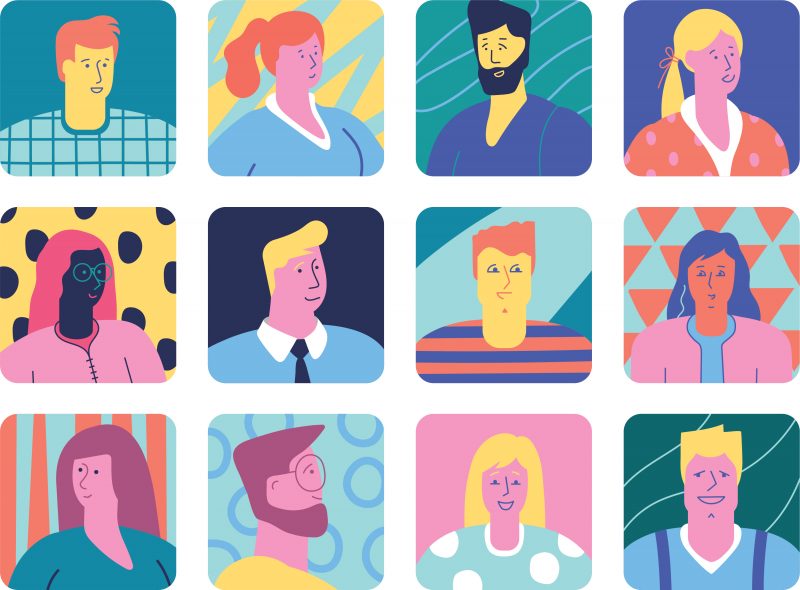As fresh-faced hires become seasoned vets, their on-the-job skills aren’t the only things that change. So do their personalities.
By Peter D. Harms, Ph.D.
“The people make the place.” Anyone in human resources has heard the expression. In fact, you’ve probably said it a few hundred times yourself. The basic idea is that an organization’s culture doesn’t exist apart from the people who work there.
But HR practitioners may not know that the opposite is also true: The place makes the people.
HR instructors tell students they should use personality tests for selection. Such measures are useful because they reflect broad behavioral dispositions that are stable over time and situations—that is, they’ll be predictive of performance across a wide variety of settings and most jobs.
Sign up for the monthly TalentQ Newsletter, an essential roundup of news and insights that will help you make critical talent decisions.
But teachers almost never mention that personality traits also change, and often in predictable ways. As we age, we become more conscientious and emotionally stable. Remember when you were a moody 16-year-old? If only your teenage self could see you now.
But not all personality development is equal. Research now shows job experiences and organizational culture play an important role in determining how people change over time.
For example, scientists at the University of Washington found that young German men who opted to serve in the military to fulfill their national service requirements were somewhat more likely to develop higher levels of conscientiousness and less likely to develop higher levels of agreeableness than those who chose non-military community service jobs.
Although psychologists have only recently begun assessing the actual personality changes that result from job experiences, HR scholars have long understood that experiences can reflect character. This is the logic behind most biodata measures: We can learn about whether someone is well-suited for a job by asking them about their hobbies, their schooling, their leadership positions in non-work-related organizations, their athletic experience, and so on.
The trick is figuring out which activities are reflective of the particular traits we’re interested in knowing about. But even then, biodata measures don’t really tell us whether a person had that trait and then became attracted to that activity, or whether engaging in the activity changed the individual. The truth? It’s probably a mix of both.
Much of the research on personality development at work has demonstrated that these changes tend to follow what’s called a “corresponsive” pattern of development: The characteristics that made a person more likely to get a job are also the characteristics that tend to change in response to that job.
For example, Brent Roberts at the University of Illinois has shown that people who are more dominant are often selected for leadership positions. And those who become leaders tend to increase more in trait dominance than their peers.
This is the result of experiences and expectations: People in their positions are expected to make demands of others and make decisions for the group. When they engage in these behaviors, they gradually become more comfortable and effective with that role and come to see it as being a part of who they are.
The corresponsive pattern also applies to organizational culture. In a set of studies looking at the effects of university culture on development, one hypercompetitive elite public school was shown to push students to become more disagreeable and neurotic over time while an equally elite liberal arts school tended to develop trait openness and achievement in their students.
Consequently, we can expect an employee’s personality development to be both a function of his job and the organization.
For the most part, personality changes in response to work tend to be positive because jobs usually reinforce people who work hard and get along with others. But there’s evidence that personality change can get derailed when people are either unable or unwilling to engage in normative workplace experiences.
The personality traits of those who report that they engage in acts of workplace deviance like theft or frequent absenteeism, for instance, either fail to develop normally or actually become worse over time. Similarly, people who are chronically unemployed can experience negative personality development across a wide number of traits if they come to adopt a self-view that they’re poorly adjusted, lazy, or unintelligent.
There is, however, one very important remaining feature of work that isn’t usually captured in biodata measures. It’s called leadership.
The characteristics that made a person more likely to get a job are also the characteristics that tend to change in response to that job.
We know that an employee’s experiences with her supervisor at her first job has a disproportionate impact on how she comes to see leaders, regardless of whether that supervisor was effective or not. It shapes what behaviors she sees as acceptable by leaders in the workplace and can even come to influence her own behaviors when she takes on leadership positions.
This isn’t to say that you “become” your first boss any more than you become your parents. But a manager’s influence is undeniable.
Beyond shaping the perceptions of leaders, my own research suggests a supervisor can also impact the psychological mindset of his followers. An erratic, hostile boss can have a dramatic negative impact on follower well-being even outside of work. But a supportive, empowering leader can enhance wellbeing and make followers feel secure enough that they’re willing to engage in high-risk, creative work behaviors.
Leaders can be agents of destruction in employees’ lives, or they can nurture, grow, and transform them. There are few factors in the workplace that can have such an impact.

So what’s the implication here? First, you need to be aware that the person you promote is going to be different from the person you hired. She will have changed as a result of the experiences that she has had on the job. Thus, it’s important to reassess workers whenever making important HR decisions and not rely solely on prior scores.
Second, you must recognize the development consequences of job assignments.This is an opportunity for growth, not a liability. Most HR managers have an implicit understanding of how different people can benefit from taking on new roles and responsibilities.
Finally, you need to understand how organizational culture can change the employee. When we hear horror stories of the toxic work environments of companies with hypercompetitive cultures, we shouldn’t be surprised. But we must also remember that their most problematic employees almost certainly didn’t start out that way. It’s more likely that the bad behavior was reinforced (or at least not impeded) by the environment.
Above all, ask yourself not just what kind of people you want, but also what kind of people you’re making.
Peter D. Harms, Ph.D.,is an associate professor of management at the University of Alabama. His research focuses on the assessment and development of personality, leadership and psychological well-being.


